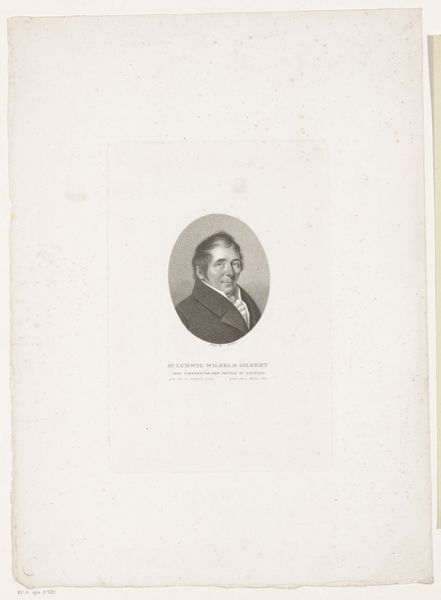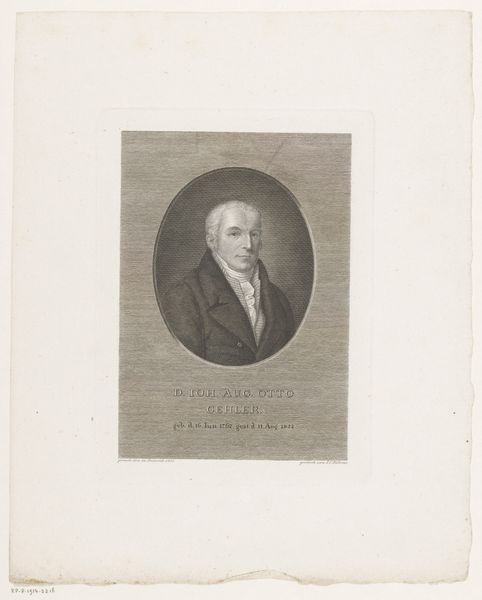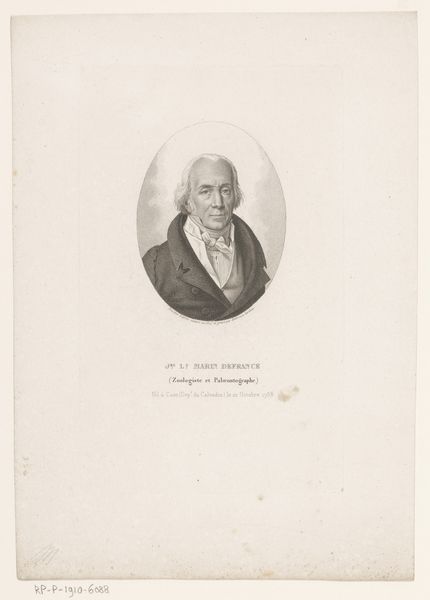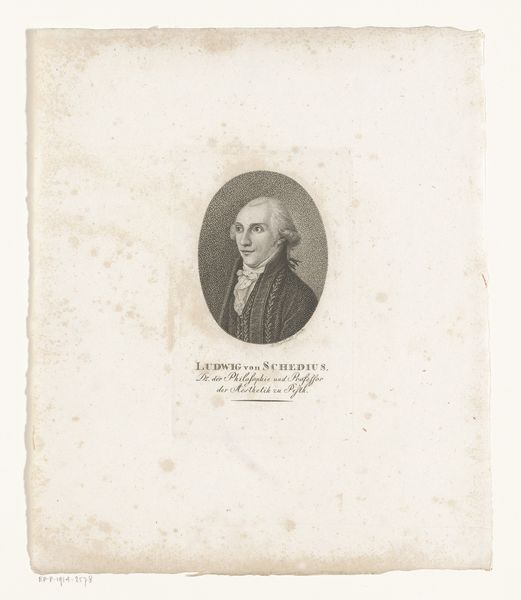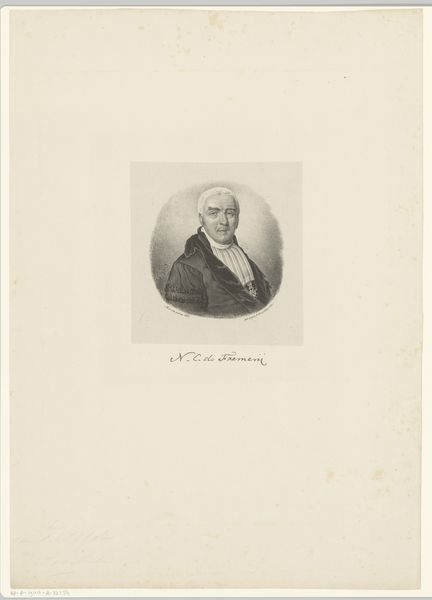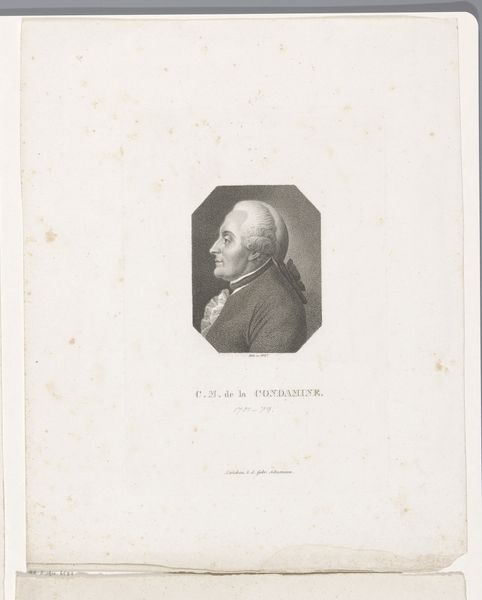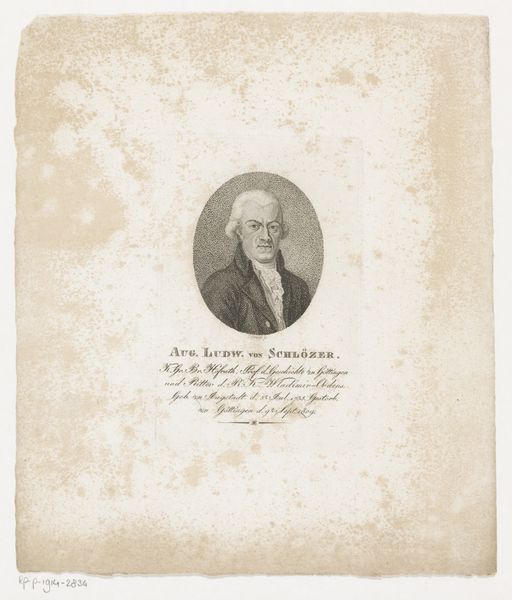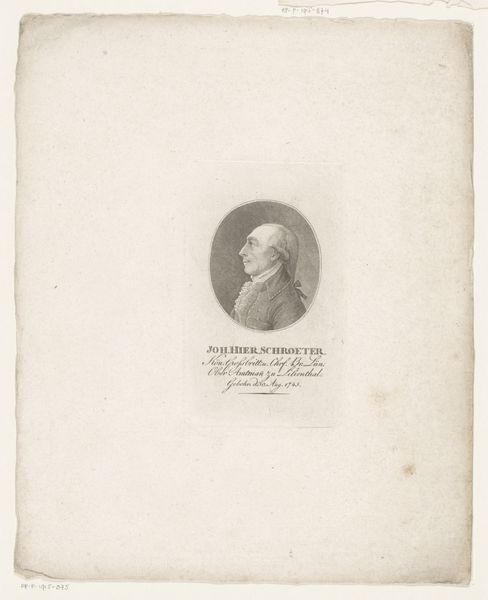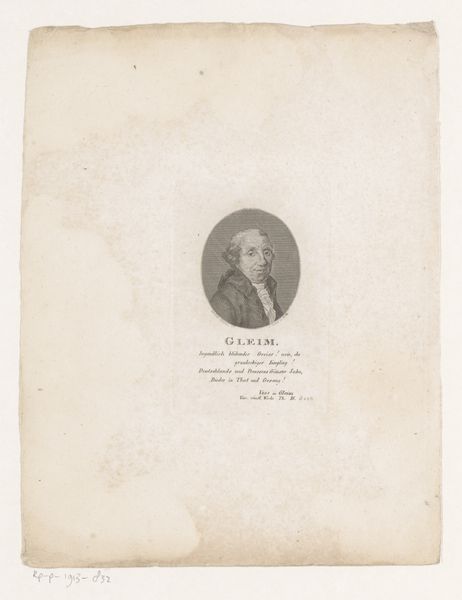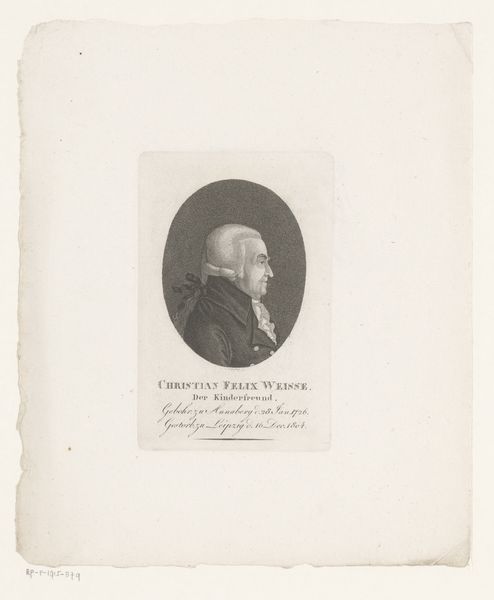
print, engraving
#
portrait
#
neoclacissism
# print
#
old engraving style
#
academic-art
#
engraving
Dimensions: height 220 mm, width 143 mm
Copyright: Rijks Museum: Open Domain
Ambroise Tardieu, born in France in 1788, created this portrait of Jean Baptiste Rousseau using etching and engraving techniques. These processes involve using acid to bite into a metal plate, traditionally copper or zinc, to create lines that hold ink. The plate is then inked, and the surface wiped clean, leaving ink only in the etched lines. Finally, paper is pressed against the plate, transferring the image. The incredible amount of labor required to produce a single print like this underscores its value as a commodity in the art market. The fineness of the lines, particularly in the face and clothing, demanded precision and skill. In fact, there were highly specialised craftspeople carrying out each stage of the printmaking process. The texture of the paper also contributes to the overall aesthetic, influencing how the ink is absorbed and perceived. By understanding the labor-intensive processes involved in creating this portrait, we can appreciate the social and economic context in which it was made, and challenge traditional ideas about what constitutes 'high' art.
Comments
No comments
Be the first to comment and join the conversation on the ultimate creative platform.
